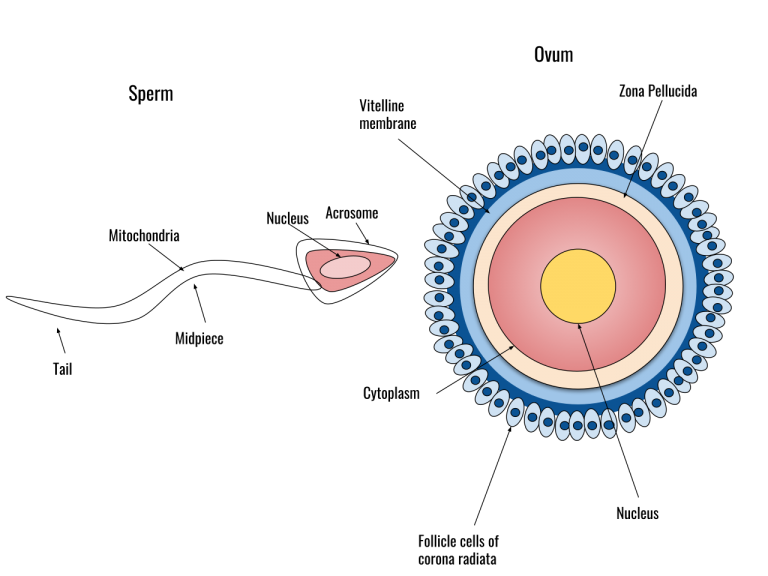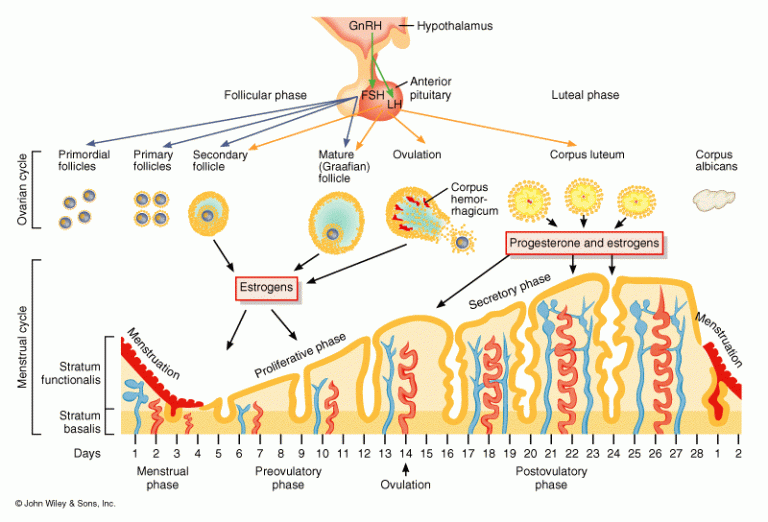Estrus cycle is of 21 days in Horse, Goat, Cow and Buffalo, whereas in Sheep it is of 16 days and in Dogs it is 150 to 200 days. The word estrus has been derived from the roman word Oestrus which means there is a mad desire for sex for 48 hours and copulation is possible at a particular day and time. The ovulation is at the end of estrus. The estrus cycle differs from the menstrual cycle on 3 points:
1. Menstrual cycle is of 28 days
2. There is menstrual bleeding in the menstrual cycle, after menstrual bleeding on 15 days ovulation takes place, copulation is possible all time during the menstrual cycle.
3. Luteal phase is for 2 or 3 days, whereas in the estrus cycle the luteal phase is for 14 days.

Stages of Estrus Cycle
On day 1st there is ovulation, the ovum goes out and the follicle cells become a luteal cell, secreting progesterone, this takes about four days. Within 4 days the corpus luteum is well-formed and it persists till day 15th. From day 15 onward the corpus luteum regress and within 5 days the follicle is developed under the influence of FSH. The follicular cells produce hormones estrogen at the peak of estrogen the follicular bust under the influence of LH.
This is how the whole cycle keeps ongoing in the breeding season. Cows are long-day breeders and buffalos are short-day breeders, during breeding season the cow or buffalo comes in estrus 7-6 times. However, by artificial induction of estrus with the help of hormones, they can follow controlled breeding. Meaning thereby with the controlled environment and nutrition, you can bring them in estrus at any time after calving. The controlled breeding and hormonal profile of the cow is shown in the figure.
The exotic cows in every 21 days come in estrus, after calving. However, the first heat should be missed, when it comes in heat the cow jumps on another animal. For about 24 hours, thereafter the egg is released from the ovaries and job down into the fallopian tube and insemination is performed then the sperms comes and meet in the fallopian tube. Out of 150 lakh sperms only one of the capacitated (removal of cap) penetrates the zona pellucida and enters the ovum. After its entry the other sperms is blocked by cortical reaction.

Structure of an Sperm and Ovum (Sperm is 10 micron, Ovum is 200 micron)
The sperm entered unites with the ovum sperm and the embryo is formed which floats in the uterus and on 7-8 days it attaches to the uterus. The signs of heat optimum time of ovulation are shown in the figure below. The process of fertilization is explained in the figure and a description of fertilization is given on YouTube presentation under the heading fertilization.
